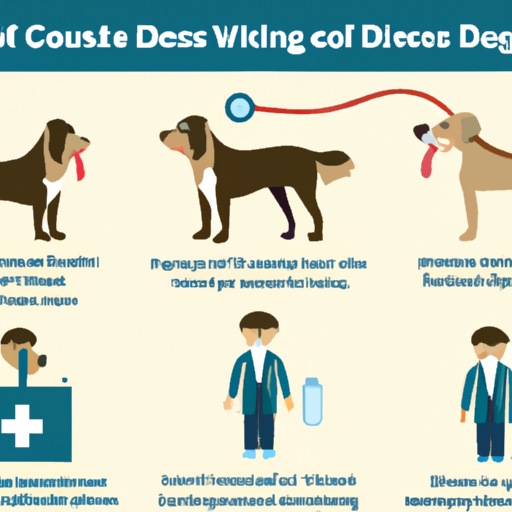Cushing’s disease, also known as hyperadrenocorticism, is a serious and common condition in dogs, especially as they age. As a caregiver, understanding the disease is critical to managing your dog’s health.
Understanding What Cushing’s Disease Is
Cushing’s disease is a condition caused by an overproduction of the hormone cortisol by the adrenal glands. It’s usually the result of a benign tumor in the pituitary gland. This overproduction of cortisol can lead to a variety of health problems for your dog.
- Symptoms: Increased thirst, increased urination, increased hunger, increased panting, pot-bellied abdomen, obesity, skin changes, and loss of hair.
- Treatments: Medicine to control the overproduction of cortisol or surgery to remove the tumor.
Recognizing the Symptoms of Cushing’s Disease in Dogs
Your dog can’t tell you when they’re feeling unwell, so it’s up to you to notice changes in their behavior or appearance. The symptoms of Cushing’s disease can be subtle at first.
- Increased thirst and urination: You might notice that your dog is drinking more water than usual or needing to go out to pee more often.
- Appetite changes: Your dog might be hungrier than usual, even if they’re eating the same amount of food.
- Appearance changes: Your dog may develop a pot-bellied appearance and may lose hair or have thinning skin.
How Cushing’s Disease in Dogs is Diagnosed
Diagnosis of Cushing’s disease can be complicated, as the symptoms can mimic other conditions. Veterinarians typically use a combination of clinical signs, lab tests, and imaging to diagnose it.
| Diagnostic Method | Description |
|---|---|
| Blood tests | To check for high levels of cortisol. |
| Urine tests | To check for an increased urine cortisol:creatinine ratio. |
| Imaging | An ultrasound can identify changes in the adrenal glands. |
Treating Cushing’s Disease in Dogs
Once diagnosed, treatment options for Cushing’s disease in dogs can vary. It can be managed with medication to control the overproduction of cortisol, or in some cases, surgery may be an option to remove the tumor causing the condition.
- Medication: Drugs like trilostane or mitotane can control the production of cortisol.
- Surgery: If the disease is caused by a tumor in the adrenal glands, it can be removed surgically.
Living With a Dog with Cushing’s Disease
Cushing’s disease is a long-term condition that requires ongoing management. The good news is that with appropriate treatment and care, your dog can live a relatively normal and happy life.
- Regular Vet Visits: Regular check-ups will help monitor your dog’s condition and adjust treatment as necessary.
- Diet and Exercise: A balanced diet and regular exercise can help manage symptoms and improve your dog’s quality of life.
Frequently Asked Questions
Q: Is Cushing’s disease in dogs contagious?
A: No, it’s a hormonal disorder and not contagious.
Q: Can Cushing’s disease be cured?
A: While it can’t be cured, it can be effectively managed with proper care and medication.
Q: What breeds are more prone to Cushing’s disease?
A: It’s more common in certain breeds like Poodles, Dachshunds, and Boxers, but any breed can develop it.
Q: Can a dog live a normal life with Cushing’s disease?
A: Yes, with proper treatment, a dog with Cushing’s disease can live a relatively normal, comfortable life.
In conclusion, while Cushing’s disease can be a serious condition, the prognosis for dogs with Cushing’s is generally good with appropriate treatment. As a caregiver, your understanding and support are vital to their wellbeing.



